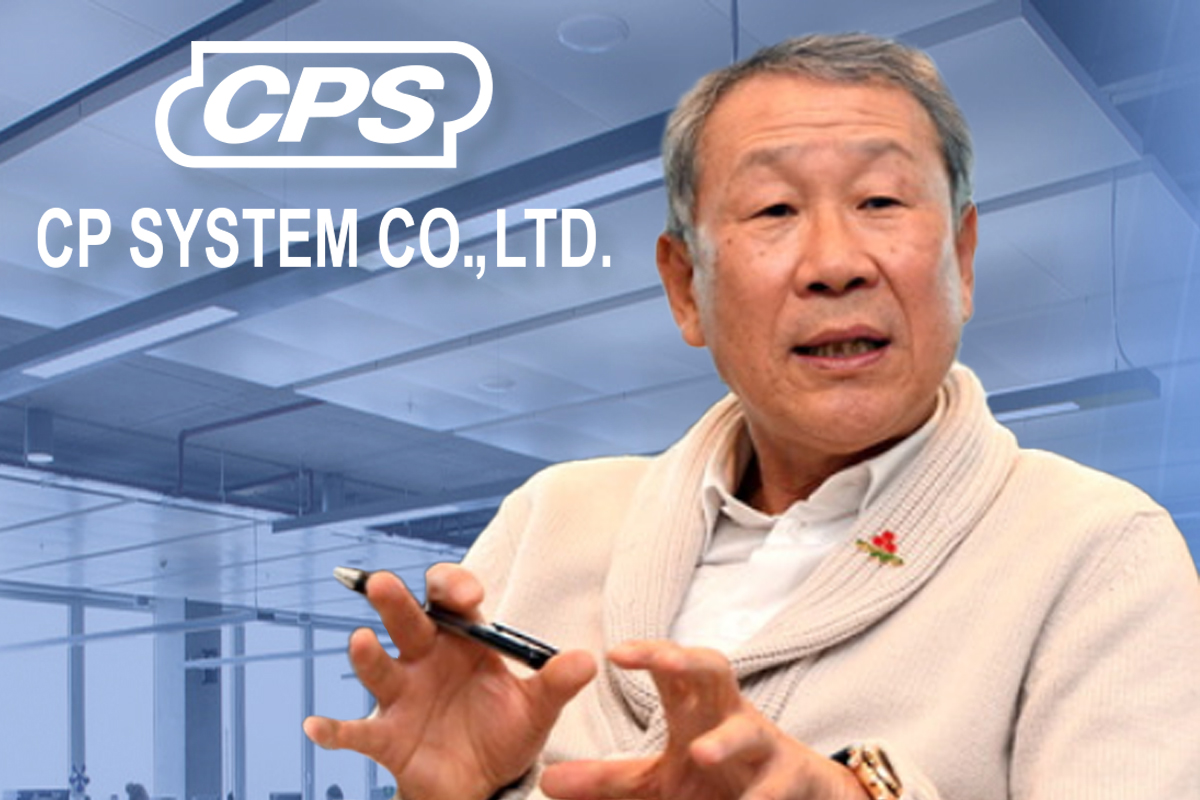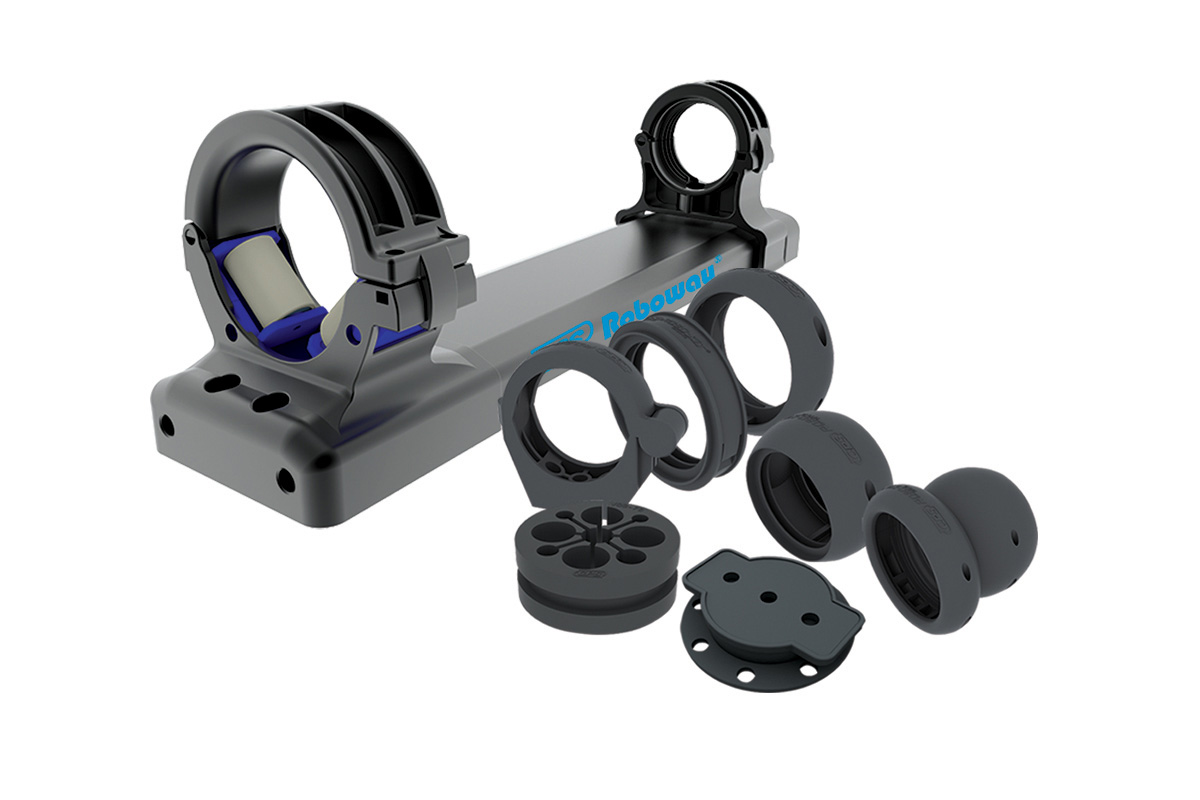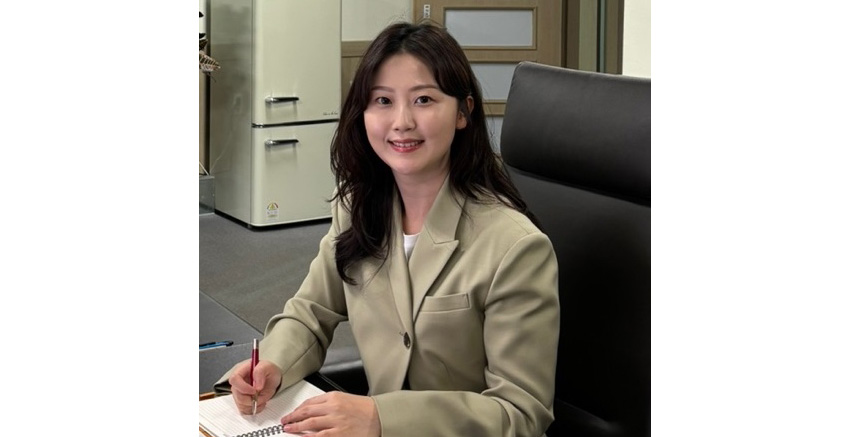The most innovative Korean provider of cable chains has been at the forefront of developing and manufacturing advanced clean room solutions for the Korean semiconductor industry. Additionally, the company has successfully tackled bending issues in automation industry cables used for welding and handling robots through its innovative Robotway technology. Currently, CP System is planning expansion in the United States, India, and Taiwan.

As the South Korean industry continues to grow into a key global player in critical fields, such as electronic materials and advanced machinery, critics claim that the country’s large corporate groups have become so big and so diversified that they are blocking the appearance of a strong SME sector. To back up their argument, observers often point at the fact that while Korean SMEs have a successful track-record in serving domestic groups, they struggle in attracting international clients. Do you agree with that argument? How important is the creation of a strong SME sector for the development of the South Korean industry?
Personally, I see both merits and demerits for SMEs working with large corporations and competing against them. One common criticism from SME leaders towards these big companies is that during inflation or price increases, large corporations tend to raise their product prices simultaneously. However, they expect SMEs to maintain the same prices or even provide supplies at a cheaper rate. This results in SMEs facing challenges in negotiating prices and securing favorable deals, creating a widening gap between large companies and SMEs—a significant problem. This criticism is widespread among SME leaders, and those who fail to adapt may face bankruptcy. On the other hand, some SMEs manage to maintain their positions, showcasing the resilience that has been a strength of Korean SMEs. Additionally, there is a benefit to working with large corporations. As these corporations grow, SMEs might have the opportunity to grow alongside them, presenting a positive aspect. Therefore, there are both advantages and disadvantages.
Going back 30 years, many business leaders, especially from large corporations, believed that SMEs could survive because of their association with these giants. It created a hierarchical relationship rather than a coexisting structure. Although this has evolved somewhat with second-generation business leaders, traces of this mindset persist and remain a concern in the business society.
Another critic thrown at the Korean industry is that while large enterprises remain amongst the most competitive in the world, SMEs might find themselves ‘sandwiched’ between new and established manufacturing powers, and that the Korean supply-chain is still heavily reliant on foreign technologies. What are the comparative advantages of Korean enterprises in comparison to their global peers?
I previously mentioned the hierarchical structure between big companies and SMEs. However, SMEs are actively seeking ways to break free from this structure, broaden their horizons, and expand overseas instead of solely relying on large corporations in Korea. Many SMEs in Korea are in the early stages or are currently in the process of reducing their dependence on large corporations. I firmly believe that many Korean SMEs possess the capability to do so, and this is the direction they are heading.
For instance, Korean SMEs, traditionally reliant on imported parts, are now striving to utilize homegrown technology. CP System embarked on a journey of producing our own products and parts, leading to innovation. This process represents how SMEs can not only survive but thrive. Many successful SMEs in the market today have followed a similar path. While there are various approaches, such as venturing out to meet overseas corporations or exploring new markets through branching, it is a lengthy process that requires time and effort.
Now if we take the example of CP System, what do you believe are the key factors that will aid you in continuing to grow internationally?
Fundamentally, I believe it is crucial to target the products used by major corporations and address their specific challenges. For instance, CP System's G-Clean Chain is ranked at the global forefront. This success was possible because, unlike other companies focusing solely on the product, we integrated cables and hoses with the product. Many hesitated to attempt this, fearing it might fail quality tests. We were the first to undertake this approach and succeeded in acquiring IPA ISO Class 1 certification, a global first. This is precisely why Samsung chose to partner with us. Hence, I emphasize the importance of identifying products used by major corporations and addressing their challenges. You mentioned Hyundai earlier, and during my visits to Hyundai Motor Group factories in various countries, including Czechia, Slovakia, the U.S., and China, I identified several issues. In today's automobile industry, ESG management is crucial. To meet these environmental standards, we are enhancing our products to minimize dust creation. These upgraded products will be supplied to Hyundai's sixth plant, currently under construction.
Similarly, for Roboway, products manufactured in Germany and South Korea have entirely different systems because we always focus on areas for improvement when developing our products. In that sense, targeting the problems major global corporations may encounter and addressing them becomes imperative.
Additionally, let me draw a comparison with Japanese and Chinese SMEs. The primary issue with Chinese SMEs is their lack of quality. While they may replicate forms, the quality remains subpar. On the other hand, Japan's most significant challenge is the slow decision-making process. For instance, it could take years to reach a decision. This is where South Korea holds its advantage. South Korean CEOs are consistently at the forefront, readily adapting to changes and being open to suggestions. This proactive approach allows South Korean companies to effect changes and achieve results within two or three years, a feat that may take other companies a decade.
The NSB series, designed specifically for the semiconductor industry, featuring low dust and low noise performance. Shortly after, you introduced the G-Clean, which surpasses the NSB series in dust and noise reduction due to its exceptionally low friction. Following your previous insights, it's evident that not only do you produce quality products, but you continuously strive for improvement and innovation. Could you share more about how G-Clean has been received by your customers, and what processes allowed you to develop these high-performance products?
In the cleanroom areas of factories, different specific classes exist, ranging from class one to class five. Our NSB chains are suitable for all classes. Concerning the G-Clean, many companies imported a similar product from overseas, boasting 100% zero dust. However, there were numerous issues with the imported chain. The primary problem was that if something went wrong with the chain, the entire chain had to be discarded. In contrast, G-Clean allows for the defective part to be removed and fixed, presenting a significant advantage. The same applies to assembly wires, where other products necessitate discarding the entire length if a problem arises. Additionally, unlike some products that are long and not adjustable, the G-Clean Chain can be adjusted to fit specific lengths, making it more adaptable to various situations. The development of the G-Clean Chain was initiated based on a request from Samsung. In addressing challenges, there's always room for innovation and the creation of added value, which ultimately contributes to increased revenue.
On top of your focus on cable carriers, you also have your own connector manufacturing processes, as well as flexible cables. In observing similar companies, they often tend to concentrate on a particular type of component rather than providing a comprehensive solution. Could you elaborate on the advantages that stem from your approach of focusing on diverse components, and how does it benefit your clients?
While producing the tube itself poses no challenges, manufacturing connectors is considerably intricate due to variations in measurement standards across different countries. For instance, Germany has recently transitioned to using millimeters, the U.S. utilizes inches, and both Japan and Korea also adhere to inches. The diverse measurement preferences across countries present a complexity, but our strength lies in our ability to adapt. We have various molds catering to different measurement standards, enabling us to meet the specific needs of each country. This flexibility allows us to provide a wide array of components tailored to the unique requirements of different regions.
Increasingly, advanced nations are witnessing a surge in the adoption of automation solutions within factories. However, as factories become more automated with robots, concerns arise regarding the seamless integration of these robots with human activities. A single malfunction in a factory can result in significant issues due to the intricate network of wires and cables connecting the system. How does your company view the opportunities presented by this growing reliance on robotic solutions? Additionally, what technologies does your company offer to address the complexities in these increasingly automated and densely populated factories?
To highlight the strengths of our company, particularly in the context of Roboway, I would like to illustrate with an example from a German company called Leoni Robotics, specializing in robot arm cables. The issue arises when robot arms need to perform functions such as rotating 360 degrees or moving from point A to point B. Leoni's cables are fixed at a length of only 10 centimeters, making it challenging to accommodate different purposes, leading to a sagging problem. Consequently, this sagging can cause collisions with the robot arm, resulting in malfunctions. In contrast, CP System provides cables in various lengths, ranging from 10 centimeters to even 45 centimeters, ensuring that sagging is minimized, preventing clashes with the robot arm. As mentioned earlier, where there is a problem, we seek solutions. This idea emerged through years of testing and experimentation. We even purchased a robot for extensive testing, exploring various options such as springs, which proved unsuccessful due to their inability to withstand the forces exerted by the robot. Consequently, we discarded the spring concept and proceeded to develop Roboway.

Roboway
The diversity of industries you serve is quite intriguing, spanning from robotics with partnerships with large corporation to the inclusion of your products in printing machinery. Looking towards the future, is there a specific application or industry that you are considering focusing on or believe holds the highest growth potential?
Currently, our overseas branches generate moderate sales, and considering global trends, IT and secondary batteries stand out prominently. Our particular interest lies in the secondary battery sector, especially in regions like Taiwan, India, and the U.S., where we plan to establish branches and concentrate our efforts. The focus on secondary batteries is driven by the fact that clean rooms are essential for their production, providing a suitable environment for expansion into these countries. I still hold the belief that creating something entirely new can be challenging for SMEs. Instead, our strategy is to identify problems within large corporations and address those issues through targeted improvements. For instance, selling products to clean room processes offers significantly higher added value compared to standard industries, resulting in higher margins. Our focus will be on these high added value industries, allowing us to sell less but with a higher margin.
You mentioned the intention to establish new branches, but you also noted that the current sales of overseas branches are not particularly strong. In terms of establishing these new branches, how long do you anticipate the process will take?
We plan to initiate the process next year. Concurrently, we are preparing for a KOSDAQ listing in February next year. Following a successful listing, we anticipate receiving additional investments, and with these funds, we plan to invest in opening branches in the U.S., India, and Taiwan.

HYEJUNG KIM - CEO of CP SYSTEM
I would like to pose this question to both of you, as I find the story of a father and daughter working together quite fascinating. With you as the CEO and your daughter as the co-CEO and vice chairman, looking ahead to the distant future, when you eventually retire or take a less active role in the company, what objectives would you like to have achieved for the second generation of executives?
I believe that within the next five to 10 years, our company will experience triple growth. While we currently serve as co-CEOs, we have divided responsibilities. My daughter oversees management, and I am responsible for development and production. Now that the management aspect is nearly established – acknowledging that it's an ongoing task – I will dedicate the next decade to focusing on development and production to facilitate the company's growth and expansion into overseas markets.
Similar to Qin Shi Huang, the first emperor of China, who sought an elixir of immortality but couldn't find it, everyone faces mortality. However, until my time comes, I am committed to the company's success and prosperity.
Ms Hyejung Kim: My goal is to support him in achieving his objectives, considering all that he has accomplished over the years.
For more details, explore their website at http://www.cpsystem.co.kr/2017_re/main_e.html
0 COMMENTS